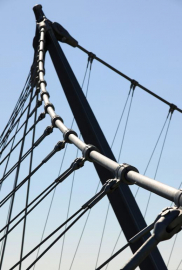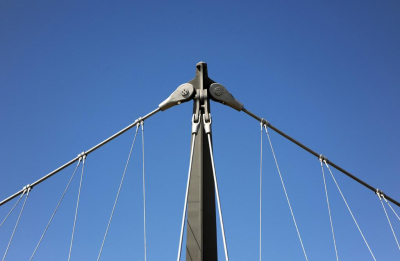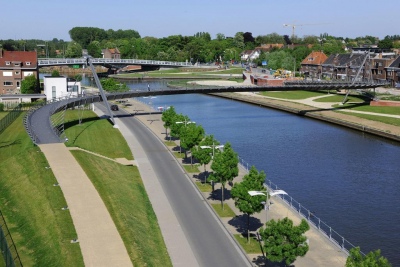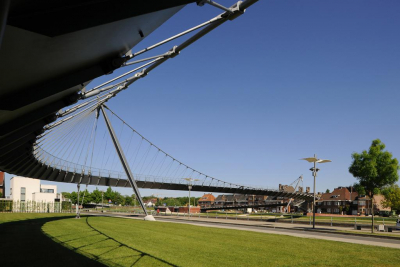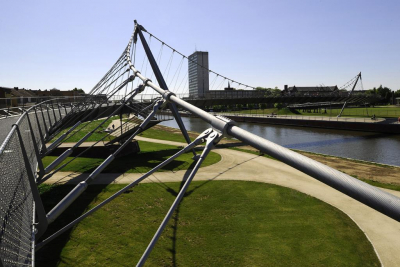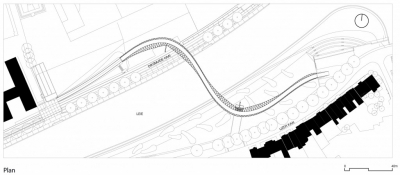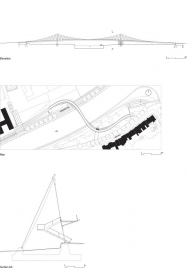College Bridge
The Flemish Region wants to upgrade the River Leie in the town of Kortrijk to allow for the passage of larger ships.
Straightening the river Leie offered new opportunities to revalorise its immediate urban surroundings and to lay out a landscaping valley park within the city of Kortrijk. This project unavoidably brings about the construction of a number of new and taller bridges. One of them is a pedestrian suspension bridge.
Restrictions imposed by the site and by safe river-traffic requirements make the integration of the approach ramps a crucial aspect of the design. This complexity is often neglected in the design process: the infrastructure comprises a well-conceived bridge with approach ramps added as uneconomic afterthoughts that sit clumsily in the landscape. A bridge should be a continuous trajectory that traverses an obstacle at some point in time in this case the River Leie. In order to guarantee a 7m clearance above water level in the middle of the 40m-wide river, the bridge has to reach the banks at a height of 5m above ground level. From these points the approaching ramps descend at a maximum slope of 5% towards the College on the one bank and the Ijzerkaai on the other. These conditions result in an S-shaped deck trajectory. The deck is a curved steel girder 1m high and 3.2m wide. The bridge does not only span the river, but extends onto the banks, so therefore needs a total length of 100m + 40m + 100m = 240m.
Ney proposed suspending the S-shape route from a cable that takes on the shape of a catenary (i.e. a hanging chain bearing a load) in space. Due to the symmetry of the S-curve, the cable is duplicated: one on the left and one on the right of the routes central axis. Three spatial curves now define the geometry of the bridge: the central axis of the route and the two catenaries of the suspension cables. These curves question the freedom shown in the design of the shape of the bridge. Although the S-form of the trajectory was chosen, it is the forces in the suspension cables that entirely determine the shape of the cables this is a force-modelled system. Once certain parameters, such as the support positions and the load, are set the cables find their own position in space. For the development of the shape of these suspension cables, a form-finding method for pre-stressed systems was adapted to suit the project's needs.
The College Bridge's undulating S-shape responds to the two needs of the project: on the one hand to the primary requirements of a passage bridge with low ramps for cyclists, on the other hand to the natural blending into the new landscape layout of the valley.

